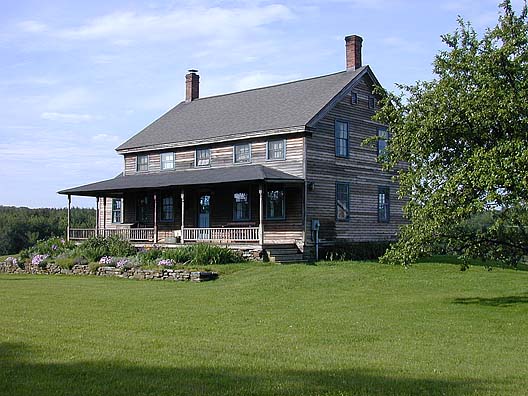Byxbe Led Settlers to Berkshire Township from Massachusetts

Byxbe's Home in Washington, MA, as it Looks in 2000
by Carol Lew


It also talks about another migration to Ohio from our town. It says "As early as Sept. 10, 1810 Washington men had joined with Becket settlers in entering into an agreement for the purpose of obtaining a Township of land in the State of Ohio. They promised to pay the expenses of exploring and viewing a Township of land in New Connecticut now owned by the Honorable Caleb Strong of Northampton who owned three quarters of the land of
Township No. 4 in the sixth range of the Connecticut Western Reserve. Dillingham Clark, owner of the tavern on the Washington Mountain Road was one of the men voted agents to explore this new land. The report was so favorable that Dillingham Clark Esquire was appointed to apply to Caleb Strong (a seven term Governor of Mass.) for the purchase of said Township.

We're on top of a mountain 2000 ft above sea level. Lots of weather here. I've heard reports from folks who've been here a long time that when they were kids they once sledded down drifts out of the second story window of this house. I've seen pictures of a truck completely covered with snow. I have a flower farm in the back field of our house. The ground is very wet and has lots of rocks. It could have been the same field (and was certainly the same weather) that made early Washingtonians decided that farming in Washington wasn't such a good idea. I read somewhere that one year back in the late 1700s or early 1800s there was a killing frost every month of the year in this area.... even July and August. That certainly would have discouraged any farmer.
Our house was
known to be a tavern in the early 1800s, run by someone by the name of
Jasper Morgan. I've seen references to the tavern at that time.... town
meetings were sometimes held at the tavern (I guess because town
officials could be warmed inside and out in the wintertime at the
tavern). I've seen references to Dillingham Clark owning a tavern in
this vicinity, but my deed research doesn't find him as one of the
owners of
this house.
The historical integrity our our house was maintained throughout the
years. It still has wide plank floors upstairs, an original staircase,
original doors, and the walls are mostly beadboard, which were added in
the late 1800s when a fellow famous in the area owned it- his name was
Whitney. It had a hand dug well and hand pump and wood heat until the
1980s. And an interesting history through the 1970s.
Sent to Polly Horn by Carol
Lew - July 9, 2000
(4-19-2007)